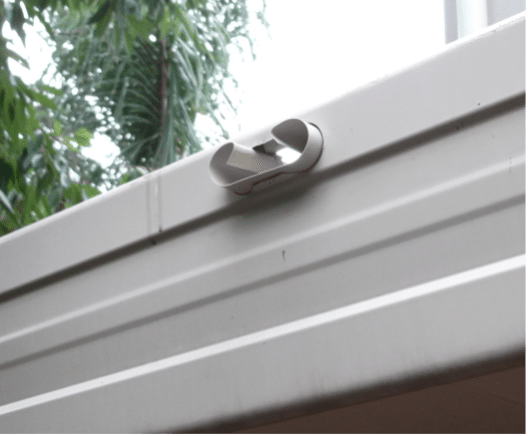Introduction
Imagine this: you’re enjoying a relaxing evening at home when suddenly, a deafening sound pierces through the tranquility. It’s the all too familiar roar of cascading water as your gutters overflow, sending a relentless torrent onto your roof, walls, and windows. The once-peaceful haven of your home transforms into a cacophony of chaos. Every drop, like a tiny hammer, pounds on your peace of mind.

Image: www.moisturedetection.co.nz
Overflowing gutters are not just an annoyance; they can lead to severe damage to your property. Water erosion, mold growth, and structural issues are just a few of the many problems that can stem from this seemingly minor issue. But don’t fret! With the right knowledge and a little bit of elbow grease, you can effectively fix a gutter that overflows and restore the harmony to your home.
Unveiling the Culprits: Why Your Gutters Overflow
Overflowing gutters are often a symptom of a deeper problem. Knowing the underlying cause is crucial for finding a lasting solution. Here are the common culprits behind gutter overflows:
- Clogs: Fallen leaves, debris, and bird nests can create blockages that prevent water from flowing smoothly through the gutters.
- Sagging or Sloping Gutters: Gutters that have lost their proper shape or slope cannot drain water effectively.
- Undersized Gutters: When gutters are too small to handle the volume of water, particularly during heavy rainfall, they are bound to overflow.
- Damaged Gutters: Cracks, holes, or loose joints in the gutter system can lead to water leaks and eventual overflows.
- Downspouts: Clogged or improperly positioned downspouts can hinder the efficient flow of water from the gutters, causing them to overflow.
Step-by-Step Guide to Fix an Overflowing Gutter
Now that you know the possible reasons behind your overflowing gutter, let’s delve into the step-by-step process of fixing it:
1. Safety First!
Always prioritize safety when dealing with gutter repairs. Avoid working on slippery surfaces or using ladders if you’re not comfortable doing so.

Image: qseamlessgutters.com
2. Clear Clogs:
Use a ladder to carefully remove any visible debris from the gutters using your hands or a garden hose with a spray nozzle. Pay special attention to areas where leaves and twigs tend to gather.
3. Check Slope and Support:
Ensure that the gutters have the correct slope by measuring the distance between the outlet point and the lowest point of the gutter. Adjust the angle or add supports if necessary.
4. Mend Damaged Gutters:
Inspect for cracks or holes and seal them using a gutter sealant or patch kit. If the damage is severe, consider replacing the affected sections.
5. Position Downspouts:
Downspouts should be placed at the end of the gutter and directed away from the house. Make sure they are properly attached and unclogged for efficient water drainage.
6. Install Gutter Guards:
Consider installing gutter guards to prevent clogs and future overflows. Various types of gutter guards are available, so choose one that suits your needs and budget.
Expert Insights: From the Pros to Your Doorstep
To further enhance your gutter-fixing prowess, here are some expert tips from renowned professionals in the field:
- Inspect Gutters Regularly: Prevention is always better than cure. Schedule regular inspections and cleanings to keep gutters in optimal condition.
- Use the Right Tools: A ladder, gutter scoop, and sealant are essential tools for effective gutter repairs.
- Don’t Overcrowd Downspouts: avoid connecting too many downspouts to a single drainpipe, as it may lead to overflows during heavy rainfall.
How To Fix A Gutter That Overflows
Conclusion
Overcoming overflowing gutters is not an insurmountable task. By identifying the cause, following the step-by-step guide, and incorporating expert insights, you can effectively restore the functionality of your gutters and protect your home from water damage. Remember, a well-maintained gutter system not only enhances the aesthetics of your property but also ensures the safety and longevity of your home.